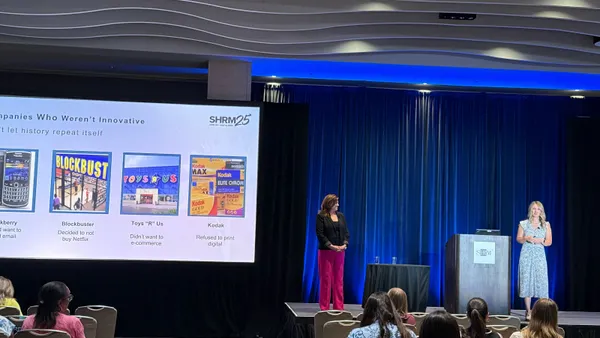Humans naturally fear the unknown. Whether or not individuals are conscious of their bias, this fear factors into discrimination against identity groups seen as the “other.” Talent acquisition teams may fear the hiccups that can arise from hiring immigrant talent: from the big picture, such as sponsorship, to daily challenges, such as language barriers.
The Tent Partnership for Refugees, founded by Chobani CEO Hamdi Ulukaya and motivated by his own experience of hiring refugees for the yogurt company, supports diversity hiring initiatives. The goal of the organization is to ensure that immigrant populations are included in the national push towards diversity, equity and inclusion.
While Tent doesn’t engage directly with immigrants to the U.S., the organization does offer free resources to aid chief diversity officers and HR teams in that process. Typically, Tent staff will point a given C-suite to local NGOs for their immigrant-specific needs.
The Coalition for Afghan Refugees, formed from 80 of Tent’s network companies, for example, is “committed to the economic integration of Afghans mainly through training and hiring them,” explained Yaron Schwartz, Tent’s associate director for partnerships. In practice, this has looked like facilitating training, hosting working group calls and disseminating guidebooks to do that work effectively, he said.
With the arrival of Afghani refugees as well as the influx of Ukrainians to the U.S., Tent has doubled-down on its mission to remind recruiters: Don’t write off qualified job candidates who are on a journey towards English proficiency. Tent teamed up with Jobs for the Future to create Bridging Language and Work: Solutions to Invest in Immigrant and Refugee Talent, which dropped in February 2022. The guide offers a framework for investing in local language-learners and HR pro resources on supporting employees through a language-learning journey.
Beyond downloading the guide, Schwartz suggested other concrete steps employers can take today to start effectively recruiting and including immigrant talent. He touched on the utility of NGO outreach.
“They can offer somebody who might not speak English translation services to fill out their application materials, and really be a key conduit between refugees and an employer,” Schwartz said. “Another thing that is really important during the talent acquisition cycle is to provide important documentation in multiple languages, specifically in the native languages that this person might speak.”
If an HR team is looking to hire Afghan refugees, they should offer their job portal in Dari and Pashto, he explained. Ditto for onboarding documents and job training materials. “Once you've actually hired somebody, make sure you're providing them with mentorship, particularly through bilingual peers… Somebody who speaks their native language and also speaks English, who can help them really learn on the job and navigate the workplace,” Schwartz said.
He also suggested employers trade written communication for visual communication as much as possible. “Because, not only might somebody not speak English, they actually might not be literate themselves,” he said. Some questions he recommended that HR pros ask themselves: Can my department offer trainings through a video, rather than through written materials? Can the operations team adapt our facilities’ signage to be more visual rather than written? “From a safety perspective, instead of just saying ‘stop’ somewhere, can you put up a red hexagon?” he said.
Naturally, Tent supports companies offering ESL classes. Amazon, which happens to be a Tent coalition member, is a company that has notably started offering this education perk to its employees. Along with fully-funded college tuition, the commerce giant announced a handful of fresh, in-house L&D opportunities for hourly workers in March: GED programs, college prep courses and, with the help of Voxy EnGen and goFLUENT, English as a second language classes. American Council on Education President Ted Mitchell called the expansion of Amazon’s Career Choice program “great news for non-traditional learners."
And finally, HR professionals should find concrete ways to honor immigrant workers’ culture and ensure that their non-immigrant colleagues do the same, he said. Something Tent recommends to its corporate partners is that employees take cultural competency classes to prepare for the influx of immigrant co-workers.
“I’ve really loved that we’ve seen an important value on cultural inclusion training — making sure that staff at all different levels are getting trained on how to create a culturally inclusive workforce. And that's for HR teams, that's for managers of refugee employees and it's for their colleagues at the company,” Schwartz said. He recounted how Tent partnered with the Afghan American Foundation to create a program on Afghan culture and customs around employment.
Speaking to the overwhelmingly positive feedback, he added, “I think part of the reason why it was so effective is because we were hearing directly from the Afghan community itself about how companies can create that welcoming workforce. So many of the lessons and experiences they were able to share, at all different stages of the talent management cycle, are really going a long way.”
“It’s kind of paying it forward for Afghans who are recently arriving, who are in need of that support,” he continued, adding that he hopes Tent will do something similar for Ukrainian refugees and all those starting new lives and careers abroad in the future.












